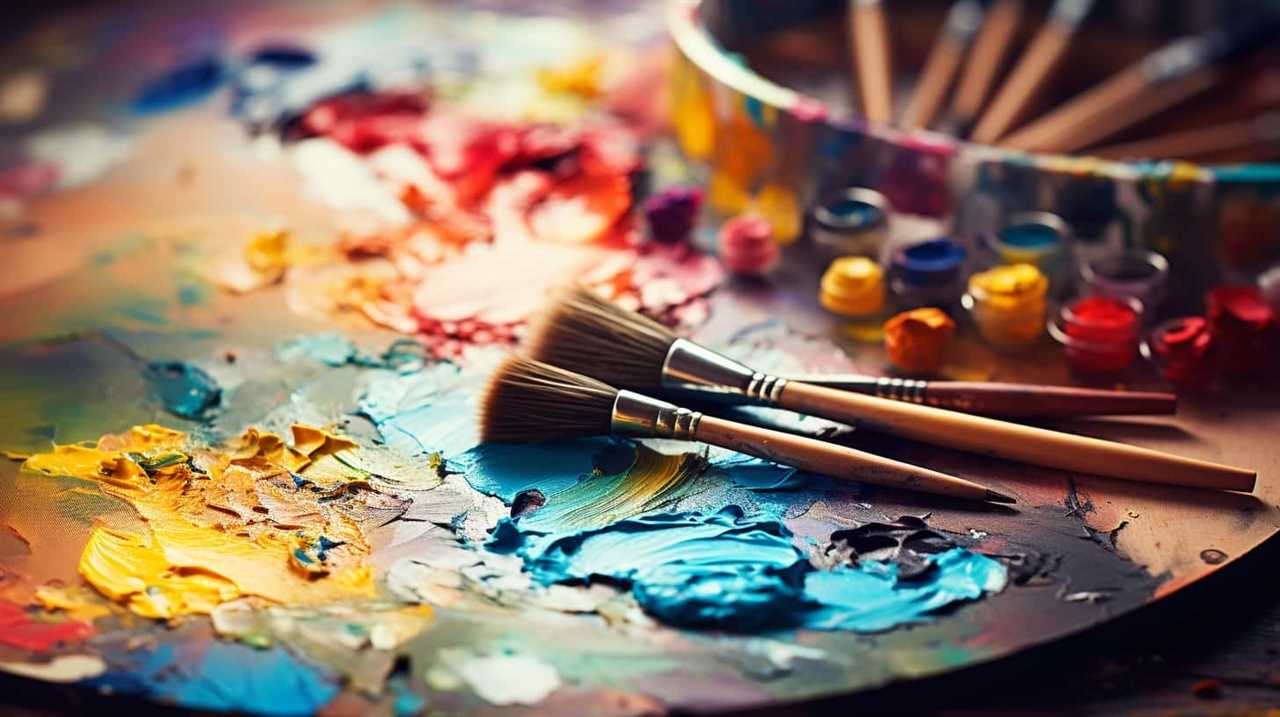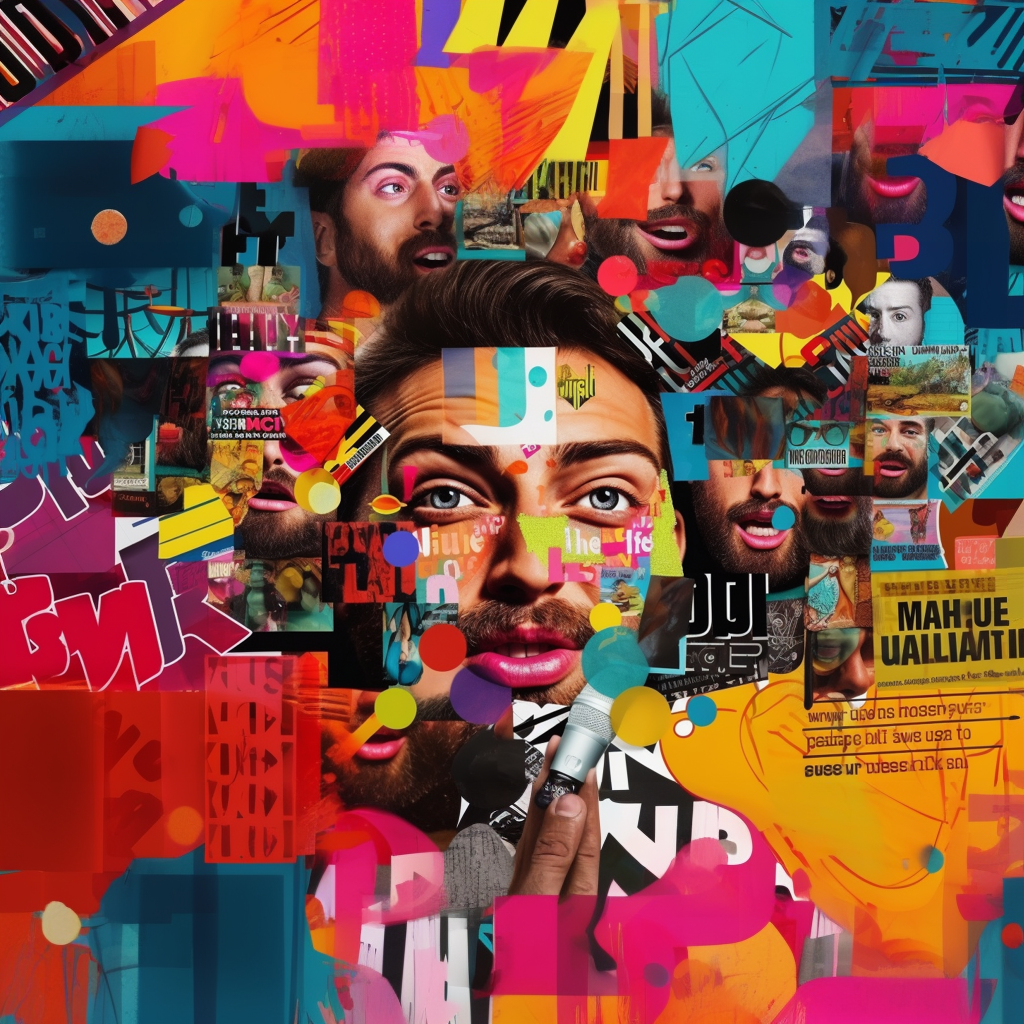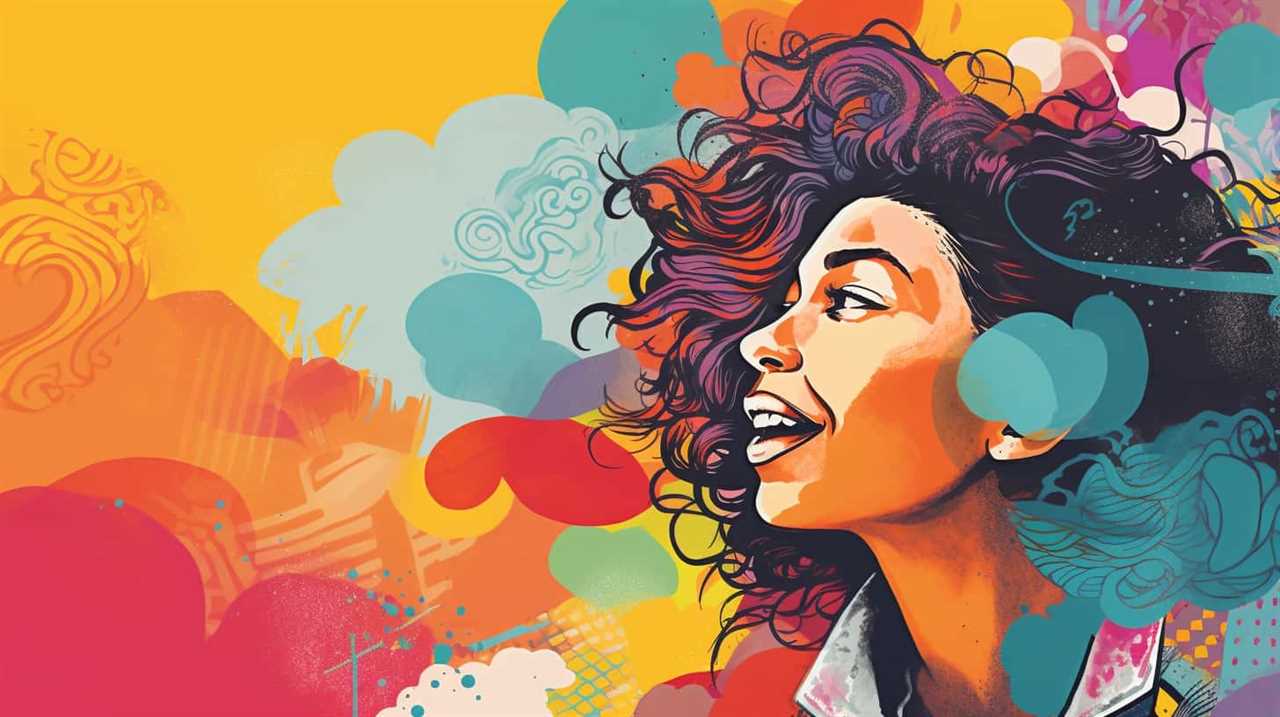Throughout the diverse tapestry of human existence, art has woven its threads of understanding, illuminating the path of history with its profound cultural impact.
From the ancient cave paintings to the avant-garde masterpieces of today, art has served as a mirror, reflecting the beliefs, aspirations, and struggles of society.
Through its power of visual expression, art has transcended time, transcended boundaries, and transcended language, speaking directly to the innovative souls yearning for inspiration.
It has shaped cultural identities, sparked revolutions, and fueled political discourse. Art has been a catalyst for change, a vehicle for empathy and understanding, and a bridge for cultural exchange.
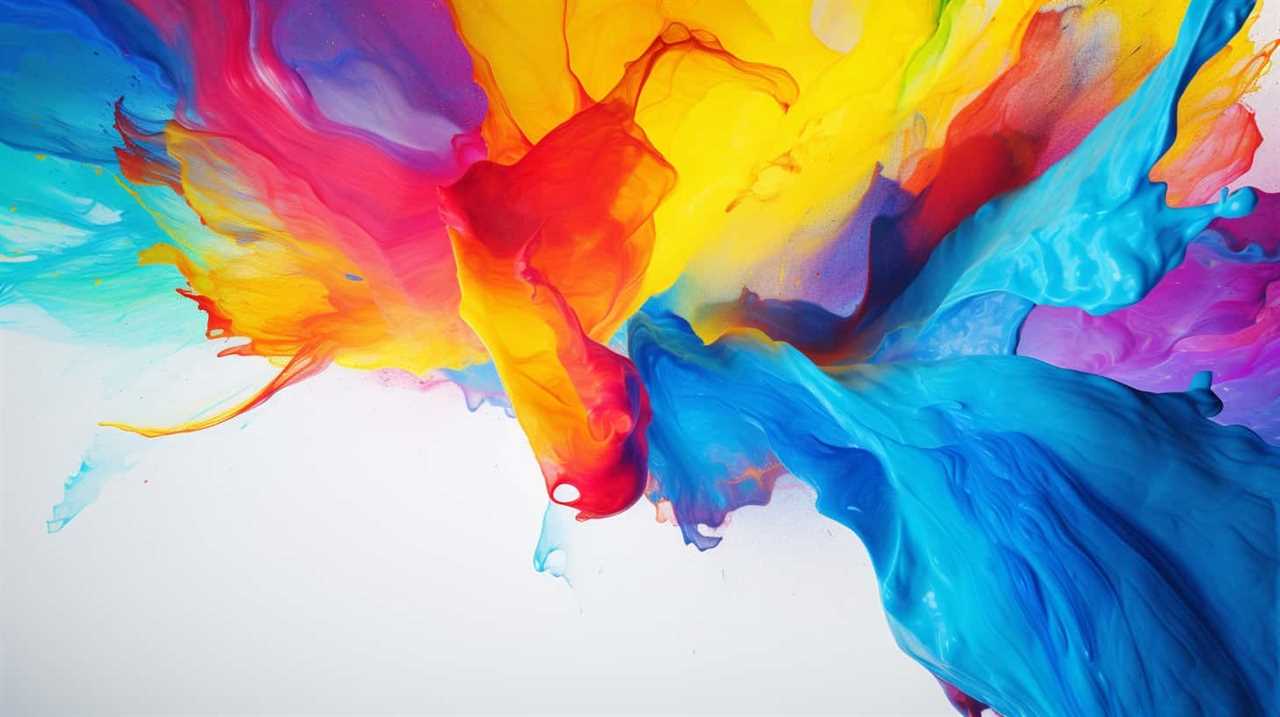
Moreover, it has preserved the fragments of our past, allowing us to unravel the tapestry of history and embrace the wisdom it imparts.
Key Takeaways
- Art reflects the values, beliefs, and attitudes of a society.
- Visual art transcends cultural boundaries and time periods.
- Art has played a crucial role in shaping societies and civilizations.
- Art has been a powerful form of protest and activism.
Art as a Reflection of Society
Art reflects the values, beliefs, and attitudes of a society. Throughout history, art has served as a mirror that reflects the societal norms and cultural practices of different civilizations. It provides a platform for artists to challenge and critique these norms, making art a powerful form of protest and activism.
Art has always been intertwined with societal norms, acting as a visual representation of what a particular society deems acceptable or desirable. From ancient cave paintings to contemporary street art, artists have used their creativity to express the values and beliefs of their time. By examining art from different periods, we can gain insights into the social, political, and cultural contexts in which they were created.
Moreover, art has often been used as a form of protest and activism. Artists have utilized their skills and creativity to challenge prevailing ideologies, advocate for social justice, and bring attention to pressing issues. For example, during the civil rights movement in the United States, artists like Jacob Lawrence and Faith Ringgold created powerful artworks that depicted the struggles and injustices faced by African Americans.
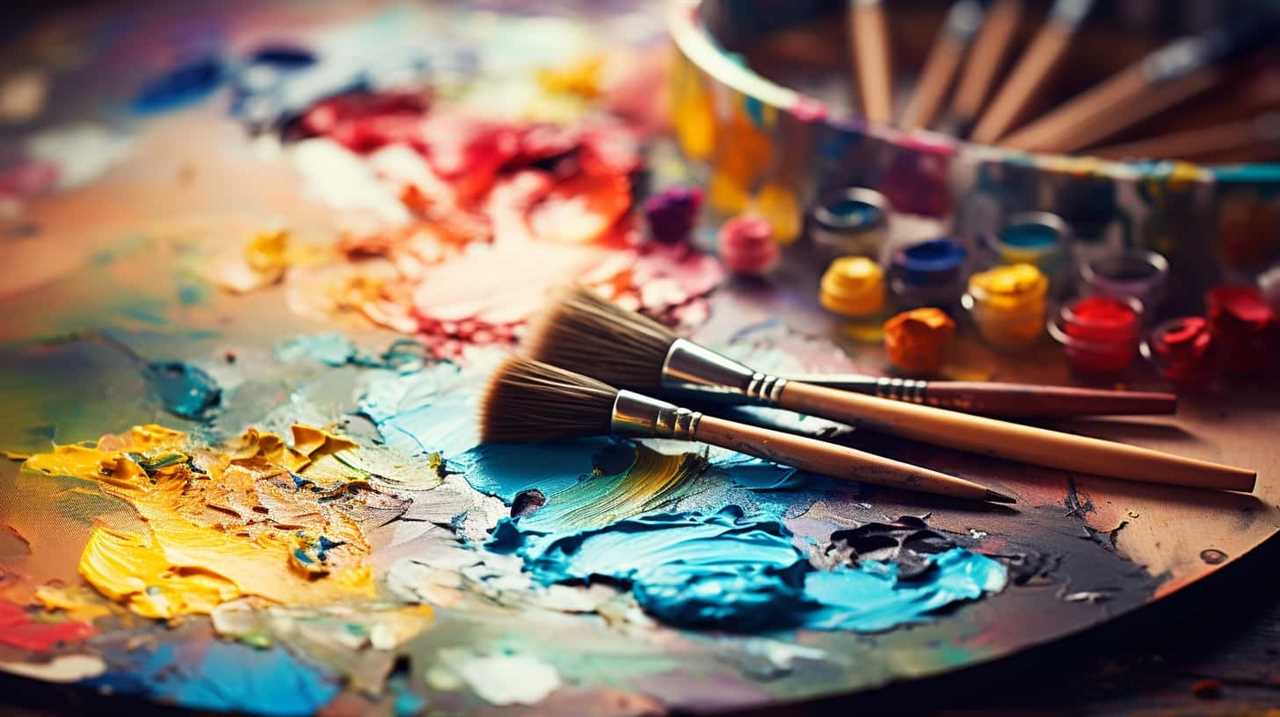
The Power of Visual Expression
Tap into the profound influence of visual expression throughout history. Visual art has always held a significant place in human societies, transcending cultural boundaries and time periods. It has the power to captivate, provoke, and inspire, leaving an indelible mark on individuals and communities.
One of the most remarkable aspects of visual art is its ability to provide therapeutic benefits. Art therapy has been used for centuries as a means of self-expression and healing. The act of creating art allows individuals to tap into their emotions, release stress, and gain a sense of control over their thoughts and feelings.
Moreover, art has long been intertwined with spirituality. Across different cultures and religions, art has served as a medium to explore and express one’s spiritual beliefs. From ancient cave paintings depicting religious rituals to intricate sculptures adorning sacred spaces, art has provided a tangible connection to the divine.
Through visual expression, we’re able to explore the depths of our human experience, find solace, and connect with something greater than ourselves. So, embrace the power of visual expression and let it guide you on a transformative journey of self-discovery and spiritual growth.
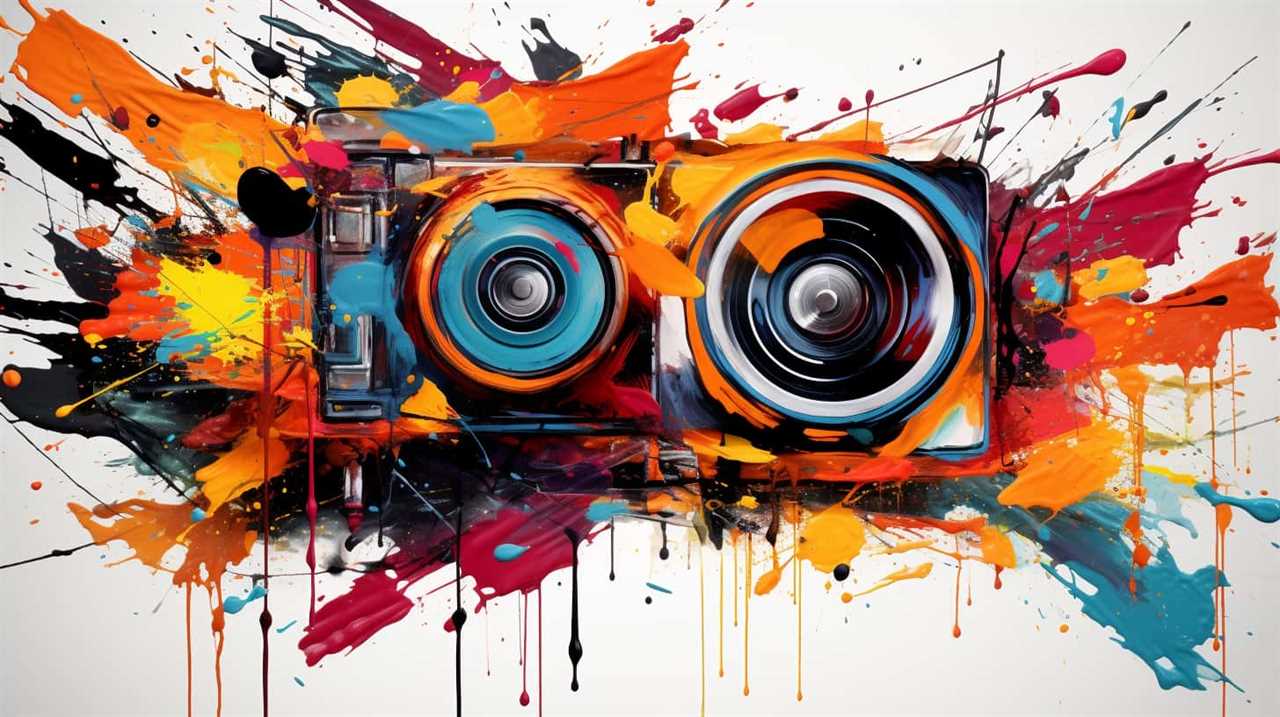
Historical Significance of Art
Exploring art’s historical significance allows you to uncover the profound impact it has had on cultures throughout the ages. Art hasn’t only served as a means of creative expression but has also played a crucial role in shaping societies and civilizations. Here are three key ways in which art has made its mark on history:
- Art’s economic impact: Throughout history, art has been a significant driver of economic growth. From the Renaissance to the present day, the art market has been a thriving industry, attracting collectors, investors, and tourists alike. Art auctions, galleries, and museums contribute significantly to local economies, generating revenue and creating job opportunities.
- Art’s role in education: Art has been an essential component of education for centuries. It has been recognized as a powerful tool for cultivating critical thinking, creativity, and cultural understanding. Art education provides students with the opportunity to explore their own creativity, appreciate different artistic styles, and develop a deeper understanding of historical and cultural contexts.
Art’s economic impact and its role in education are just two examples of the historical significance of art. As we delve deeper into the topic of art’s influence on cultural identity, we’ll discover how art has shaped and reflected the values, beliefs, and traditions of various societies throughout history.
Art’s Influence on Cultural Identity
Uncover the rich tapestry of cultural identity through art’s transformative power. Art has always played a significant role in shaping and reflecting cultural identity. It provides a platform for individuals and communities to express their beliefs, values, and traditions, and serves as a means of communication across generations. Through art, we can explore the complexities of our cultural heritage and gain a deeper understanding of ourselves and others.
To fully appreciate the impact of art on cultural identity, let’s examine the two key aspects: art therapy and art education. Art therapy, as a form of psychotherapy, utilizes creative expression to promote personal growth and healing. It allows individuals to explore their cultural experiences, reconnect with their roots, and find solace in their cultural identity. On the other hand, art education equips individuals with the knowledge and skills to appreciate and create art. By studying different artistic styles and techniques, individuals gain a broader perspective on cultural diversity and develop a deeper appreciation for their own cultural identity.

| Art Therapy | Art Education |
|---|---|
| Promotes healing | Fosters appreciation |
| Cultivates self-awareness | Encourages creativity |
| Connects individuals | Expands cultural horizons |
Art’s influence on cultural identity is undeniable. It nurtures a sense of belonging, fosters understanding, and bridges cultural gaps. As we delve deeper into the impact of art on cultural identity, we will discover how it serves as a catalyst for change in our society.
[Transition] Now, let’s explore how art can be a catalyst for change and transformation in our ever-evolving world.Art as a Catalyst for Change
To understand the transformative potential of art, you must recognize its role as a catalyst for change throughout history. Art has consistently served as a powerful tool for activism, igniting social movements and challenging the status quo. Here are three ways in which art has acted as a catalyst for social change:
- Art as a means of communication: Art has the ability to transcend language barriers and connect with people on a deep emotional level. Through powerful images, music, and performances, artists have effectively conveyed messages of resistance, unity, and justice. Art becomes a universal language that inspires action and galvanizes communities.
- Art as a form of protest: Artists have long used their creativity to challenge oppressive systems and advocate for change. From political cartoons to graffiti, art has served as a powerful medium for expressing dissent and demanding social reform. By provoking thought and pushing boundaries, artists have sparked important conversations and mobilized collective action.
- Art as a platform for marginalized voices: Throughout history, art has provided a platform for marginalized communities to share their experiences and challenge dominant narratives. By amplifying their voices and highlighting their struggles, art has played a crucial role in raising awareness and fostering empathy. It has empowered individuals to reclaim their identities and demand social justice.
Art’s ability to inspire, provoke, and challenge makes it an invaluable catalyst for social change. As we explore the impact of art on society, it’s important to recognize the significant role it plays in shaping our world. From here, we’ll delve into the next section: ‘artistic expression as a form of resistance’.
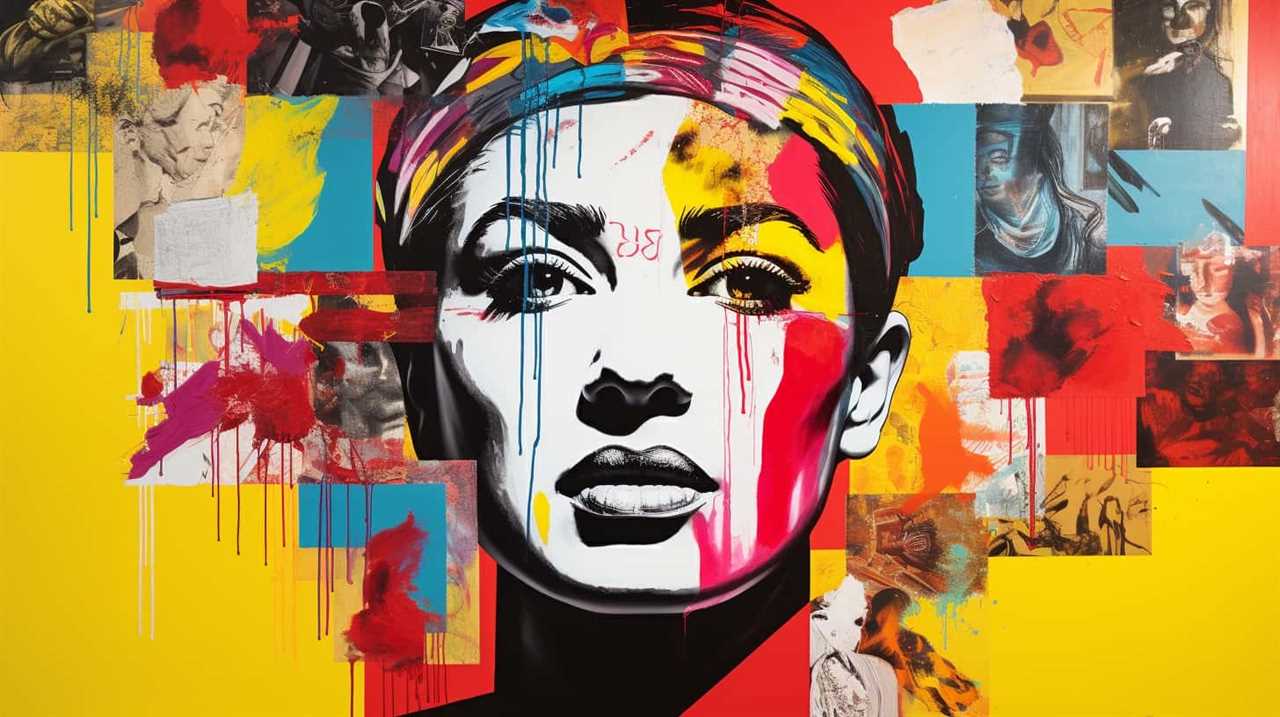
Artistic Expression as a Form of Resistance
Artists have utilized their creative talents to defy oppressive systems and challenge societal norms, making artistic expression a powerful tool of resistance. Throughout history, art has served as a form of protest, allowing individuals to express their dissent and challenge the status quo. From political cartoons to graffiti, artists have used their work to criticize authority, advocate for social change, and give voice to marginalized communities.
Art as a form of protest has the unique ability to transcend language barriers and reach a wide audience. Visual art, music, and performance can evoke powerful emotions and inspire collective action, making them effective tools for mobilizing social movements. For example, during the civil rights movement in the United States, artists such as Nina Simone and Bob Dylan used their music to raise awareness about racial inequality and galvanize support for the cause.
Moreover, art has the power to challenge entrenched cultural values and reshape societal perspectives. By presenting alternative narratives and challenging dominant ideologies, artists can spark conversations and inspire critical thinking. Through their work, artists can confront oppressive systems, advocate for marginalized voices, and push for social change.
As we delve deeper into the impact of art, it’s crucial to explore how art has shaped cultural values and influenced society’s understanding of various issues. By examining the historical context and analyzing the artistic techniques employed, we can gain a deeper appreciation for art’s role in shaping cultural values.

Art’s Role in Shaping Cultural Values
Art serves as a powerful social mirror that reflects the values and beliefs of a culture. Through various art forms such as literature, visual arts, and music, societies have been able to preserve their cultural heritage and pass it down to future generations.
Comparatively, art not only shapes cultural values, but it also provides a platform for individuals to challenge societal norms and provoke critical thinking, ultimately contributing to the evolution of cultural values over time.
Art as Social Mirror
As an observer of society, you can perceive how artworks reflect and influence cultural values. Art has long served as a powerful form of protest, allowing artists to challenge societal norms and ignite social change. Through their creations, artists can challenge the status quo, question authority, and shed light on important social issues.
Art has the ability to shape and redefine societal norms by presenting alternative perspectives and challenging existing beliefs. It can push boundaries, provoke thought, and inspire action. Art has the power to challenge the way we think and feel, and it can play a significant role in shaping cultural values.
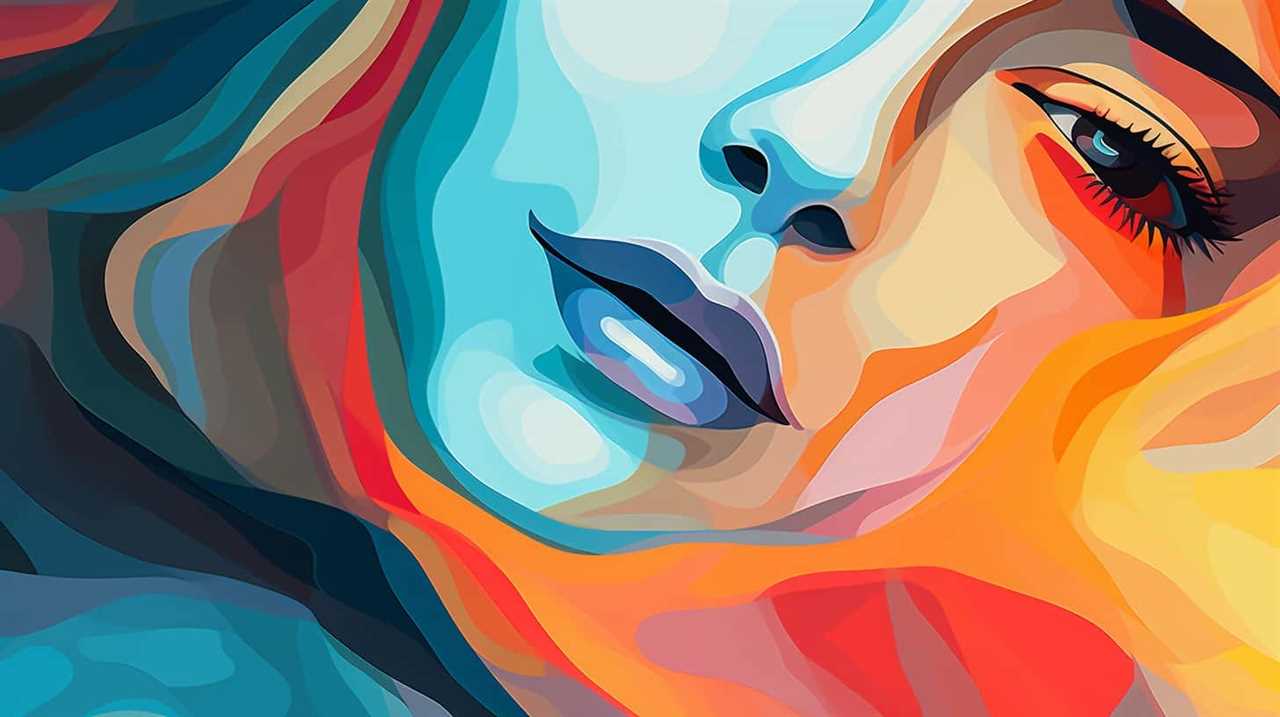
By examining the works of art from different periods, we can gain valuable insights into the values and beliefs of those societies. This understanding allows us to appreciate the transformative power of art and its impact on the evolution of cultural norms.
As we explore the importance of art as a social mirror, it becomes evident that art not only reflects the values of a society but also has the potential to shape them.
Cultural Preservation Through Art
By examining artworks from different periods, you can gain valuable insights into how art has shaped and influenced cultural values throughout history.
Art serves as a powerful tool in cultural heritage preservation, acting as a cultural archive that captures the essence of a particular time and place.

Through paintings, sculptures, and other artistic mediums, artists document the beliefs, traditions, and societal norms of their time, allowing future generations to understand and appreciate their cultural heritage.
Art not only reflects the values and ideals of a society but also has the ability to challenge and reshape them.
It provides a platform for dialogue and critical thinking, encouraging innovation and pushing boundaries.
As we explore the role of art in cultural preservation, it becomes evident that art’s ability to transmit cultural heritage is both significant and transformative.

Art’s Ability to Transmit Cultural Heritage
Discover how art plays a vital role in preserving and passing down cultural heritage through the ages. Art has been a powerful tool for transmitting traditions and ensuring cultural preservation. Through various artistic mediums, cultures have been able to convey their heritage and values to future generations.
- Visual Representation: Art provides a visual representation of cultural practices, beliefs, and stories. Paintings, sculptures, and other visual artworks serve as tangible records of cultural traditions, allowing us to understand and appreciate the customs of past civilizations.
- Performative Arts: The performing arts, such as dance, music, and theater, have played a significant role in transmitting cultural heritage. These art forms give life to traditions, allowing people to experience and connect with the cultural practices of their ancestors.
- Oral Tradition: Art isn’t limited to visual and performative mediums. It also encompasses storytelling, poetry, and song, which have been instrumental in preserving cultural heritage through oral tradition. These artistic expressions pass down historical narratives, myths, and legends, ensuring that cultural knowledge is preserved and shared.
Art’s ability to transmit cultural heritage is essential for the enrichment and evolution of societies. It allows us to learn from the past, understand our present, and shape our future. By embracing art as a means of cultural preservation, we can continue to honor and celebrate the diversity and richness of human history.
Art as a Medium for Social Commentary
Art continues to serve as a powerful medium for social commentary, allowing you to explore and critique societal issues through creative expression. Artists have long used their work as a means to raise awareness, provoke thought, and advocate for change. By blending art and activism, they have been able to address pressing issues and contribute to social justice movements.
Artists have the unique ability to capture the essence of a social issue and convey it in a way that is accessible and thought-provoking. Through their work, they can challenge the status quo, question existing power structures, and shed light on marginalized communities. By utilizing their artistic talents, they can create a visual representation of the struggles faced by those who are often unheard.
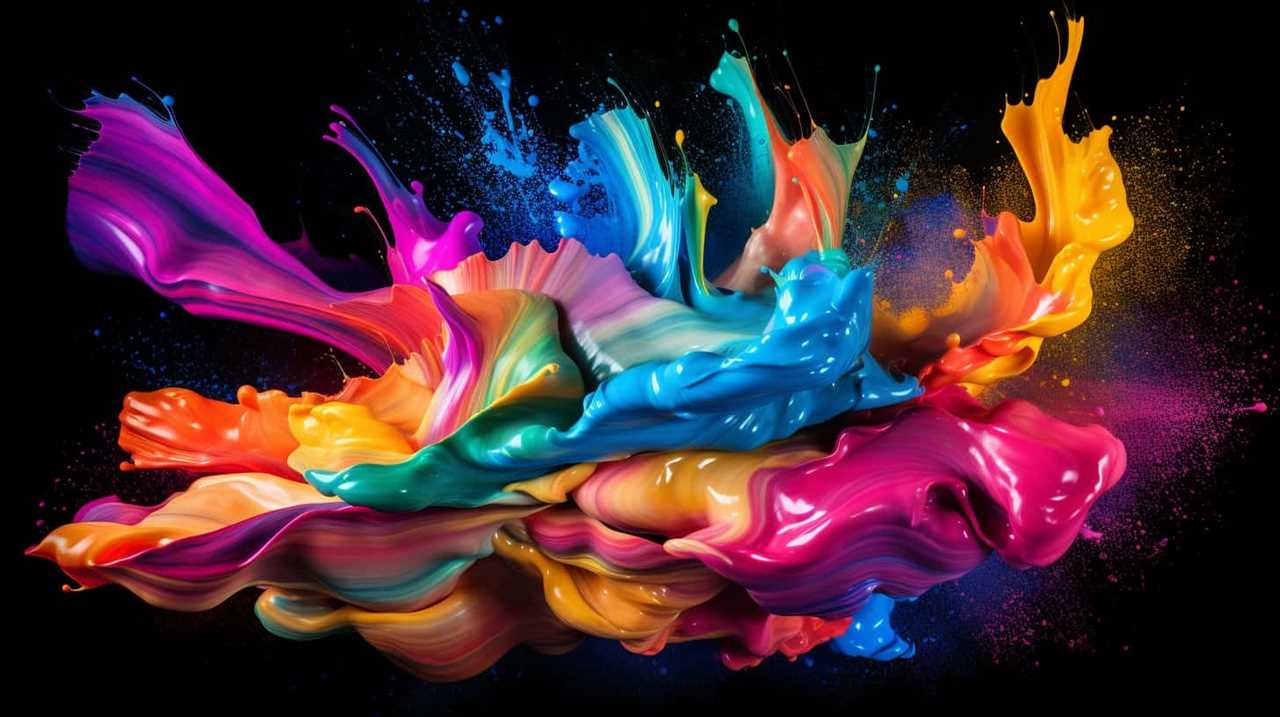
To illustrate the power of art as a medium for social commentary, consider the following table:
| Artwork | Issue | Message |
|---|---|---|
| "Guernica" by Pablo Picasso | War and violence | Condemnation of the horrors of war |
| "The Problem We All Live With" by Norman Rockwell | Racism and segregation | Advocacy for racial equality |
| "The Death of Marat" by Jacques-Louis David | Political corruption | Critique of the abuse of power |
These examples demonstrate how art can be used to address a range of societal issues, from war and racism to political corruption. By visually representing these issues, artists can engage viewers on an emotional level, sparking conversations and inspiring action.
Art and social justice have always been intertwined, as artists strive to contribute to a more equitable and inclusive society. Through their creativity and vision, they are able to challenge the status quo, disrupt established narratives, and advocate for change. As you engage with art that tackles social issues, consider the power it holds to inspire and ignite meaningful dialogue.
The Evolution of Artistic Styles
As you explore the evolution of artistic styles, you can witness the transformation and progression of creative expression throughout history. Artistic styles have constantly evolved, reflecting the changing times, societal values, and cultural movements.

Here are three evolutionary trends that have shaped the artistic landscape:
- Shift from Realism to Abstraction: Artists have moved away from realistic representations towards abstract forms, pushing the boundaries of traditional art. This shift has allowed for greater experimentation and a departure from conventional artistic techniques.
- Emphasis on Individualism: With the rise of individualism in society, artists have sought to express their unique perspectives and experiences through their work. This emphasis on individualism has led to diverse artistic styles and a celebration of personal expression.
- Influence of Cultural Movements: Artistic styles have been greatly influenced by cultural movements such as Renaissance, Impressionism, Cubism, and Pop Art. These movements haven’t only changed the aesthetic of art but also challenged societal norms and sparked important conversations.
Art’s Impact on Emotional Well-being
Art’s impact on emotional well-being can’t be understated. Through the lens of mental health, art has been shown to provide a therapeutic outlet for individuals to express their emotions and cope with their struggles.
Additionally, art has the power to heal, offering a sense of solace and comfort to those who engage with it. In comparison to other forms of expression, art uniquely allows individuals to tap into their innermost feelings and find solace in the beauty and creativity it embodies.
Art and Mental Health
Discover the profound impact of art on your emotional well-being. Art has long been recognized as a powerful tool for promoting mental health and emotional well-being. Whether through art therapy or self-expression, engaging in artistic activities can have transformative effects on your mental state.

Here are three reasons why art can have a positive impact on your emotional well-being:
- Art therapy allows you to explore and express your emotions in a safe and supportive environment.
- Creating art provides an outlet for self-expression, allowing you to communicate and process complex emotions.
- Engaging with art can promote relaxation and stress reduction, helping to alleviate symptoms of anxiety and depression.
By harnessing the power of art, you can tap into your inner emotions, gain insight into your mental state, and find solace and healing.
Now, let’s delve into the next section and explore the process of expressing emotions through art.
Expressing Emotions Through Art
Explore how expressing your emotions through art can have a profound impact on your emotional well-being throughout history.

Artistic expression has long been recognized as a powerful tool for healing and self-discovery. Art therapy, a form of psychotherapy, utilizes the creative process to improve mental and emotional well-being. By engaging in art, individuals are able to externalize and process their emotions, leading to increased self-awareness and a sense of empowerment.
This process allows for the exploration of complex emotions that may be difficult to articulate verbally. Through art, individuals can visually represent their innermost thoughts and feelings, creating a tangible reflection of their emotional state.
Furthermore, the act of creating art can promote relaxation, reduce stress, and increase feelings of happiness and fulfillment. Whether it’s painting, drawing, or sculpting, embracing artistic expression can provide a means of emotional release and contribute to overall well-being.
Healing Power of Art
Expressing your emotions through art can have a profound impact on your emotional well-being. Art therapy, a form of therapy that utilizes artistic expression, has been proven to be effective in helping individuals cope with emotional challenges and trauma. Through the act of creating art, individuals are able to externalize their emotions, gain insight into their feelings, and find solace and healing.

Art provides a safe and non-judgmental space for self-expression, allowing individuals to release pent-up emotions and explore their inner world. Furthermore, art has the power to bring communities together and foster healing on a collective level. Artistic projects and initiatives can create a sense of unity, promote empathy, and provide a platform for individuals to share their experiences and find support.
Art truly has the ability to heal and transform both individuals and communities.
Art’s Role in Building Empathy and Understanding
Art has the power to foster empathy and understanding in individuals through its ability to evoke emotional responses and provoke thought. By engaging with art, we can develop a deeper understanding and appreciation for the experiences and perspectives of others, ultimately bridging cultural divides and building connections.
Art has long played a role in fostering empathy by providing a platform for diverse voices and narratives. Through paintings, sculptures, literature, and performances, artists can convey complex emotions and experiences that resonate with people from different backgrounds. This shared emotional experience allows us to put ourselves in someone else’s shoes, fostering empathy and understanding.

Moreover, art has the unique ability to transcend language and cultural barriers. Visual art, for example, can communicate universal themes and emotions that resonate with people around the world. Whether it’s a powerful photograph or a vibrant painting, art has the power to evoke a visceral response that transcends cultural differences.
Art also encourages us to question our assumptions and biases. By presenting new perspectives and challenging societal norms, art prompts us to think critically and reflect on our own beliefs. Through this process of self-reflection, we can develop a greater understanding of others and cultivate empathy.
Art’s Influence on Political Discourse
One can observe how art shapes and influences political discourse through its ability to challenge and provoke societal norms and beliefs. Art has always had a profound impact on political activism, serving as a powerful tool for expressing dissent and inspiring social change. It has the unique ability to communicate complex political ideas in a way that’s accessible and relatable to the public. By presenting alternative perspectives and challenging established power structures, art encourages critical thinking and fosters a deeper understanding of political issues.
Art’s influence on political activism can be seen in various forms. Artists often use their work to raise awareness about social and political injustices, shedding light on marginalized communities and giving voice to the voiceless. Through their creations, they ignite public discourse and mobilize communities to take action. Whether it’s through visual art, music, or performance, art has the power to galvanize individuals and spark social movements.
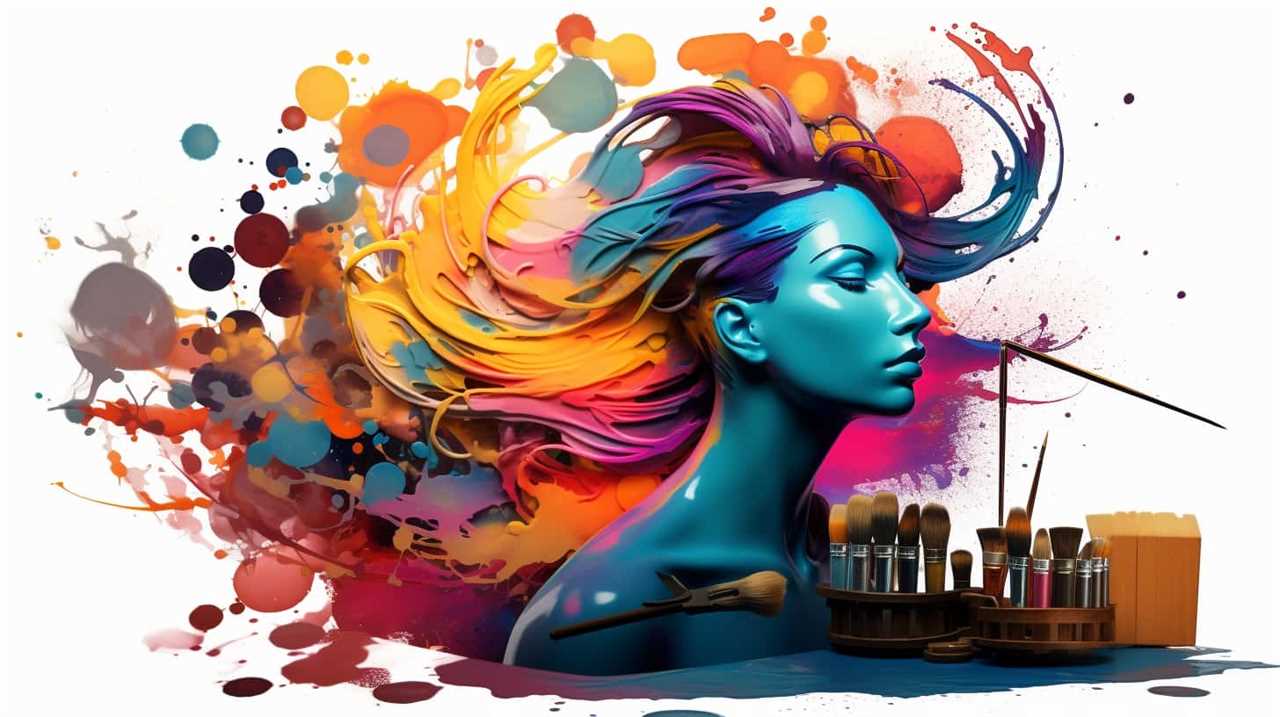
Furthermore, art plays a crucial role in shaping public opinion. It has the ability to evoke emotions, provoke thought, and challenge preconceived notions. By presenting alternative narratives and perspectives, art encourages dialogue and fosters a more inclusive and democratic society. It can challenge the status quo and promote critical thinking, ultimately leading to a more informed and engaged citizenry.
Art as a Vehicle for Cultural Exchange
Art has the power to transcend cultural boundaries, serving as a universal language that connects people from different backgrounds.
Through artistic exchange, individuals gain exposure to diverse perspectives, traditions, and experiences, fostering a deeper understanding and appreciation of various cultures.
This exchange of artistic ideas and influences not only enriches the global artistic landscape but also promotes cultural dialogue, tolerance, and unity.
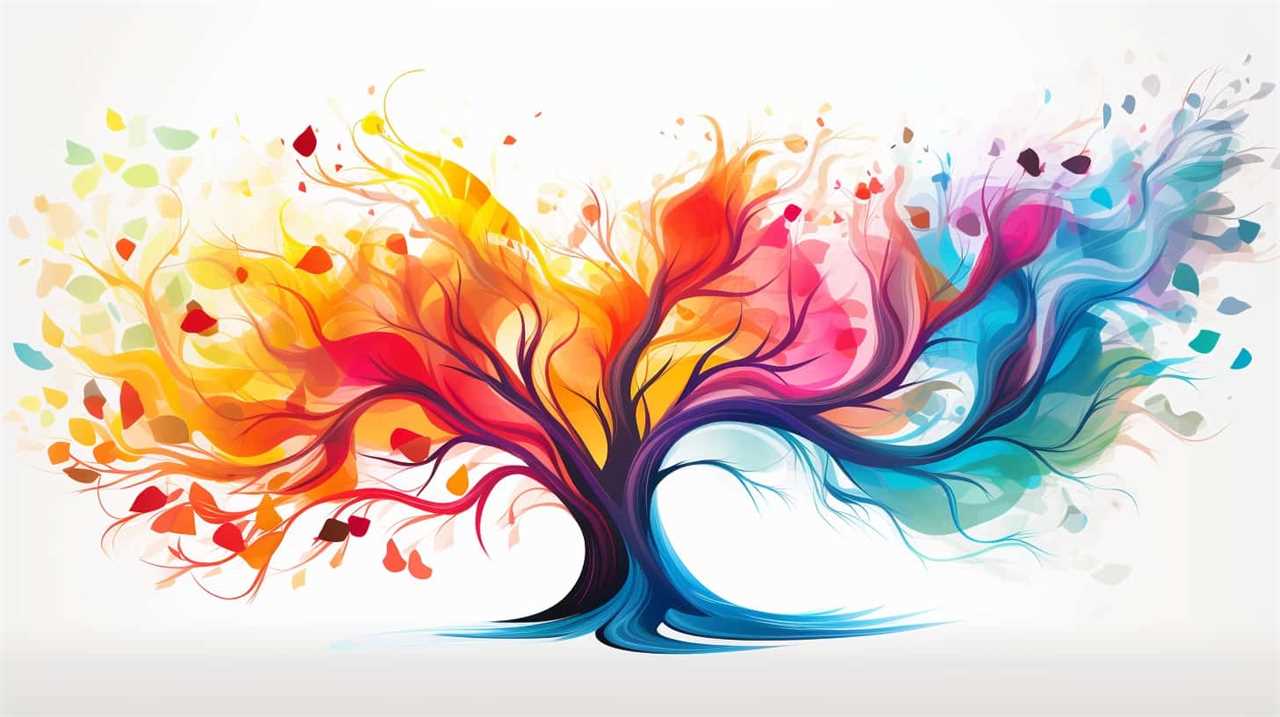
Art Transcending Cultural Boundaries
How can art act as a vehicle for cultural exchange, transcending boundaries and connecting people from diverse backgrounds?
Artistic interpretation allows individuals to express their unique perspectives, capturing the essence of their culture and identity. Through this artistic lens, cultures can merge and create a beautiful tapestry of ideas and influences.
Cultural fusion occurs when different traditions blend together, resulting in new forms of artistic expression that reflect the shared experiences of diverse communities.
Art transcends language barriers, enabling individuals from different cultures to connect and understand one another on a deeper level. It serves as a universal language, allowing for meaningful dialogue and the exchange of ideas.
By fostering cultural exchange, art promotes empathy, understanding, and appreciation of diverse perspectives, ultimately bridging the gaps between cultures and fostering a more inclusive society.
This impact of artistic exchange highlights the profound influence that art has on shaping our world.
Impact of Artistic Exchange
Discover the transformative power of artistic exchange, as it connects and unites diverse cultures through a shared language of creativity and expression.
Cultural fusion and artistic collaboration have become essential tools for fostering cultural exchange in today’s globalized world. Through artistic exchange, individuals and communities can engage with different perspectives, traditions, and forms of artistic expression, leading to a deeper understanding and appreciation of diverse cultures.

Artistic collaboration allows artists from different backgrounds to come together, combining their unique experiences and artistic styles to create something truly innovative. This exchange not only enriches the art itself but also promotes cross-cultural understanding and dialogue. By transcending cultural boundaries, artistic exchange encourages the exploration of new ideas and the dismantling of stereotypes and prejudices.
Furthermore, artistic exchange fosters innovation by encouraging the exchange of techniques, materials, and artistic practices. It provides a platform for artists to learn from one another, pushing the boundaries of their own creativity and inspiring new forms of artistic expression. Through this exchange, cultures can learn from each other and create a shared artistic language that promotes unity and cooperation.
Art’s Role in Preserving History and Memory
Preserving history and memory is accomplished through art’s ability to capture and depict significant moments. Art has a unique connection to historical preservation, as it serves as a visual record of past events, allowing us to revisit and understand our collective past.
Through the use of powerful imagery and symbolism, art helps us remember and commemorate important historical events, ensuring that they aren’t forgotten.

Art’s role in collective memory is pivotal. It has the power to evoke emotions, spark conversations, and provoke thought, making it an effective tool for preserving history and memory. By portraying historical events and figures, art becomes a visual representation of our shared narrative, reminding us of our roots and shaping our cultural identity.
In this context, art functions as a time capsule, capturing the essence of a particular era and preserving it for future generations. It allows us to look back and reflect on our past, providing us with valuable insights and lessons. Through art, we can gain a deeper understanding of our history, connecting us to those who came before us and fostering a sense of continuity and belonging.
Frequently Asked Questions
How Does Art Influence Political Discourse?
Art shapes public opinion by providing a platform for political discourse. Through artistic expression, individuals can convey their beliefs, challenge authority, and ignite change. Art serves as a powerful tool for political activism, mobilizing communities to fight for social justice and equality.
How Does Art Serve as a Vehicle for Cultural Exchange?
Art serves as a vehicle for cultural exchange by transcending language and communicating universal emotions and ideas. Through its expressive power, it fosters understanding and empathy, bridging gaps between diverse cultures and enriching our collective wisdom.

What Is the Role of Art in Preserving History and Memory?
Art’s preservation significance lies in its ability to capture and document history. Through visual representations and storytelling, art serves as a powerful tool in preserving and transmitting collective memory, allowing us to connect with the past and gain wisdom from it.
How Does Art Impact Emotional Well-Being?
Art impacts your emotional well-being by serving as a form of therapy and self-expression. Through art, you can explore and process your emotions, allowing for personal growth and healing. It provides a unique avenue for self-discovery and emotional release.
How Does Art Contribute to Building Empathy and Understanding?
Art contributes to building empathy and understanding by creating connections between individuals. Through its expressive nature, art fosters compassion by allowing people to relate to the experiences and emotions of others, ultimately promoting a more empathetic and understanding society.
Conclusion
As you stand before a masterpiece, you aren’t merely witnessing art; you’re experiencing the essence of humanity. Art has the power to transcend time and culture, allowing us to connect with the past, understand the present, and shape the future.

Like a mirror, it reflects our society, provoking thought and igniting change. Art is the bridge that unites us, fostering empathy and understanding.
It’s through art that we preserve our history, exchange our cultures, and find wisdom that echoes through the ages.
Fritz is a writer whose humor and wit infuse life into words. His creativity, combined with a profound love for the English language, makes him a unique voice at afterQuotes. Fritz’s engagement with books, culture, and social media adds depth to his contributions, making them resonate with our diverse audience.
